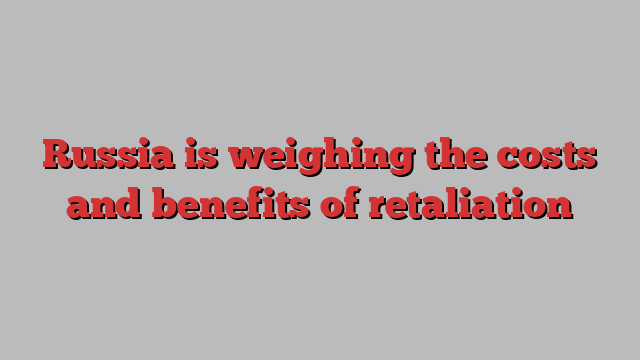
Stay informed with free updates
Simply sign up to the War in Ukraine myFT Digest — delivered directly to your inbox.
The writer is the director of the Eurasia Nonproliferation Program at the James Martin Center for Nonproliferation Studies
Ukrainian President Volodymyr Zelenskyy will present his “victory plan” for ending Russia’s war against his country during a visit to the US this week. Central to the plan is likely to be the demand that the Biden administration remove limits on Ukraine’s use of Army Tactical Missile Systems (ATACMS) to strike deep into Russia. Kyiv argues that long-range strikes would enable it to destroy Russia’s logistics infrastructure, airfields, and artillery and rocket positions.
The debate about the wisdom of allowing Ukraine to conduct such strikes hinges not only on their military utility but on divergent views over the risks of Russian retaliation. Some argue that Ukraine’s ongoing Kursk offensive and its recent drone strikes against large Russian ammunition depots are ultimate proof that Russia’s red lines are a chimera. Others worry that, were ATACMS or British Storm Shadow missiles to rain down on Russian territory, Moscow would escalate the conflict horizontally or vertically. It could expand the geographic scope of hostilities with the west, for instance, by helping the Houthis attack maritime shipping in the Middle East, or inch closer to using a nuclear weapon in Europe.
But Russia faces its own dilemmas in weighing how and where to retaliate. Serious assistance to the Houthis would cost Moscow its relations with third parties — chiefly Saudi Arabia and the United Arab Emirates — that have been important to its wartime economic survival. Co-ordination with the Gulf Arab states in Opec+ has given Russia leverage over the oil market, and the UAE has emerged as a crucial conduit for Russian efforts to evade western sanctions.
Significant weapons transfers to the Houthis would not just risk irritating Gulf leaders but also Xi Jinping: China gets most of its oil from the Middle East and its ships have already come under attack in the Red Sea, notwithstanding the Houthis’ promises of safe passage.
Vertical escalation vis-à-vis Ukraine’s backers would not come attached with the same risks of irking Russia’s non-western partners. Should the Biden administration lift its veto on Ukrainian long-range strikes, Russia may well expand its sabotage, espionage and disinformation operations in Europe.
It may also look for additional ways to stoke fears of nuclear war. Having verbally threatened nuclear apocalypse one time too many, Moscow is now preparing an update to its official nuclear doctrine (presumably to lower the threshold for use), while occasionally hinting that it may conduct a test. But again, this type of vertical escalation is not cost-free for Moscow. It risks unnerving not just China but the many nuclear “have-nots” in the “global south” — countries Russia is courting in its crusade for a post-western international order — without actually achieving its goal of diminishing support for Ukraine.
Western states are not alone in facing dilemmas while pondering their next moves over Ukraine. Ancillary costs (and uncertain benefits) may well mitigate against Russia opting for serious horizontal or vertical escalation — especially since Vladimir Putin remains supremely confident in the prospects of Russia’s victory in Ukraine over the medium term.
This is neither to argue that horizontal escalation is off the cards, nor that a point of nuclear last resort is non-existent: should Russia perceive itself to be on the back foot in Ukraine in ways that cause it to seriously worry, factors that should at present weigh in favour of restraint could suddenly become less important.
Recognising that Putin faces constraints in contemplating options for escalation should also be no cause for trivialising the cumulative impact its actions will still have. Russia’s moves up the escalation ladder still make it the midwife of a more dangerous global nuclear environment.